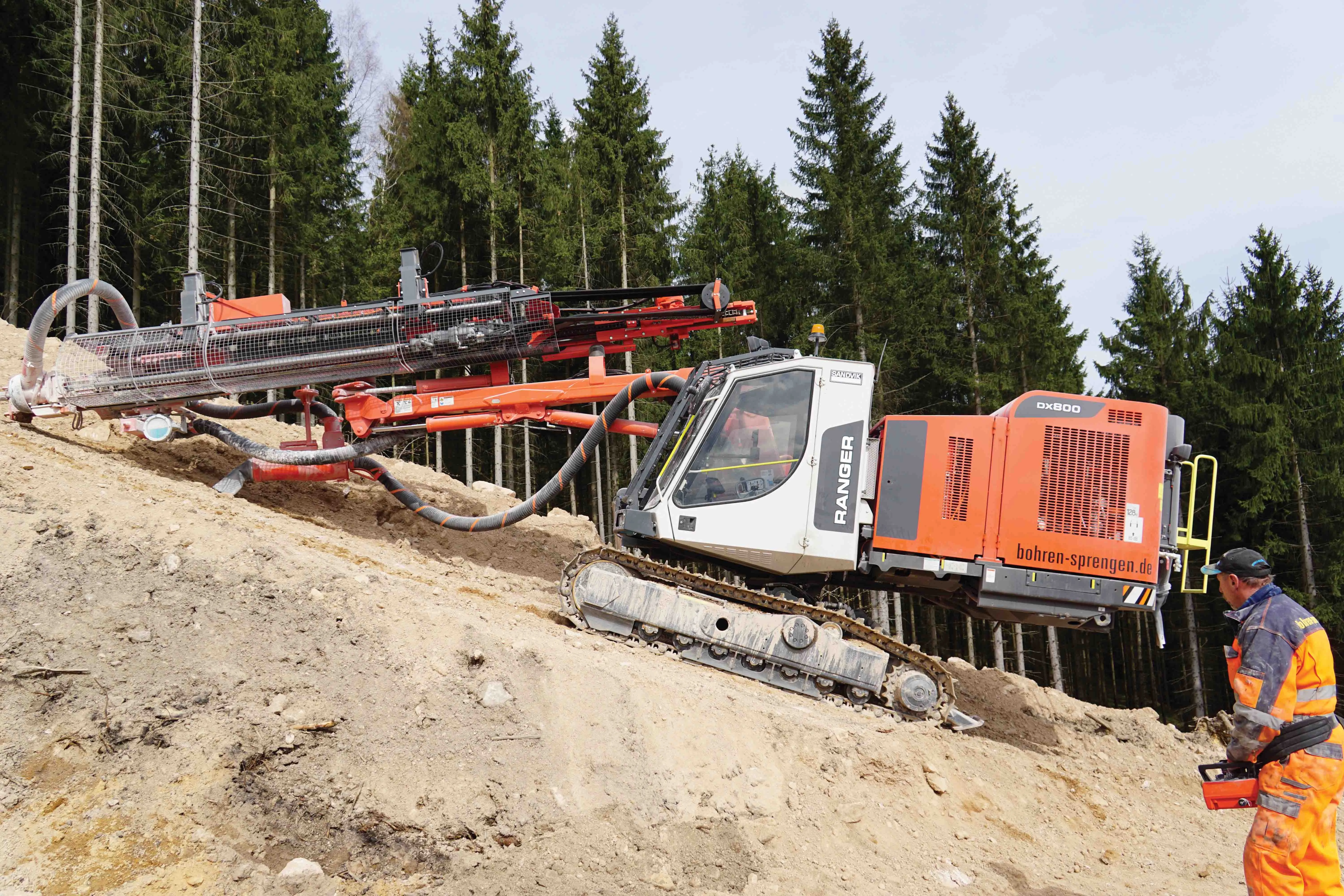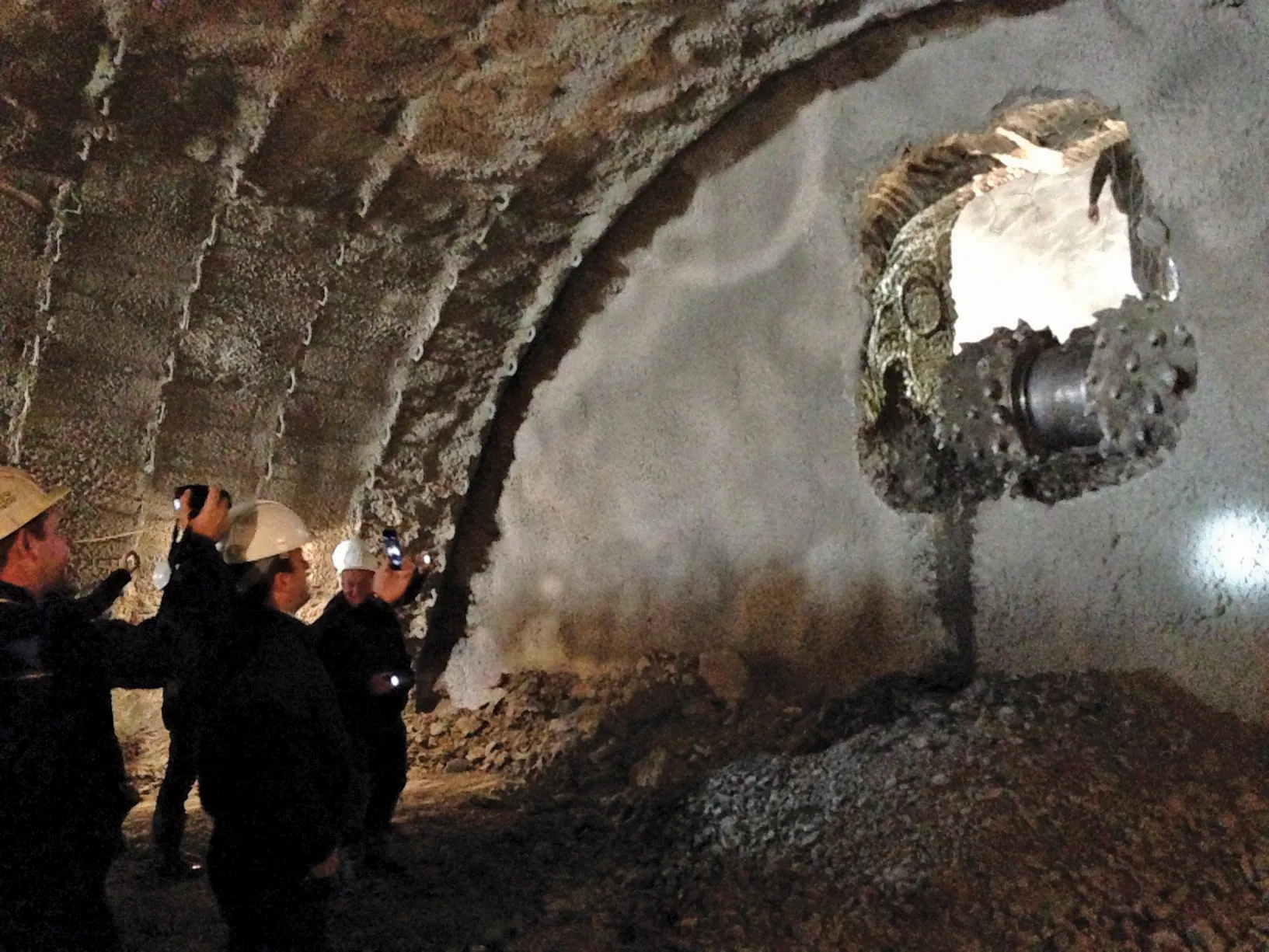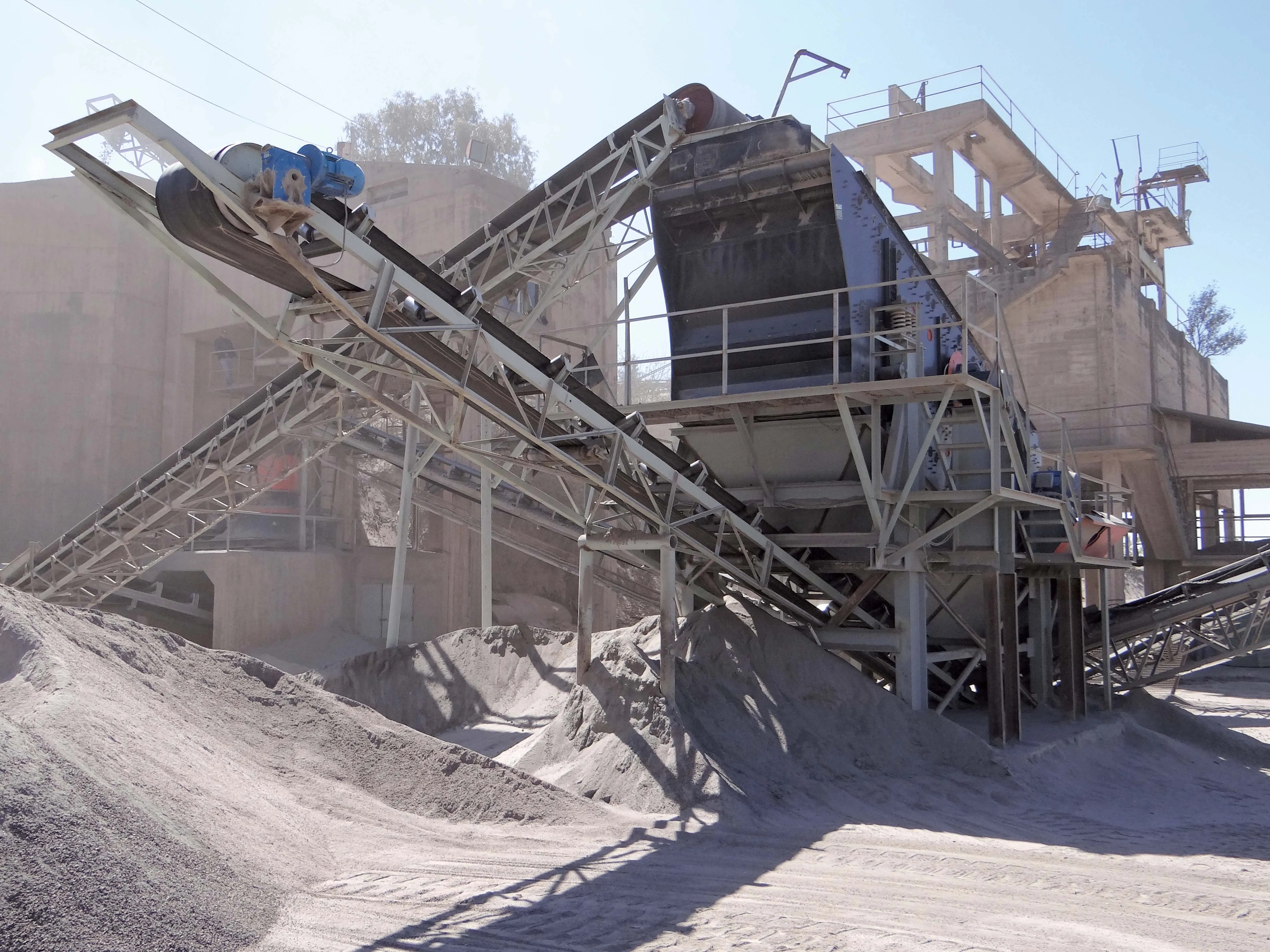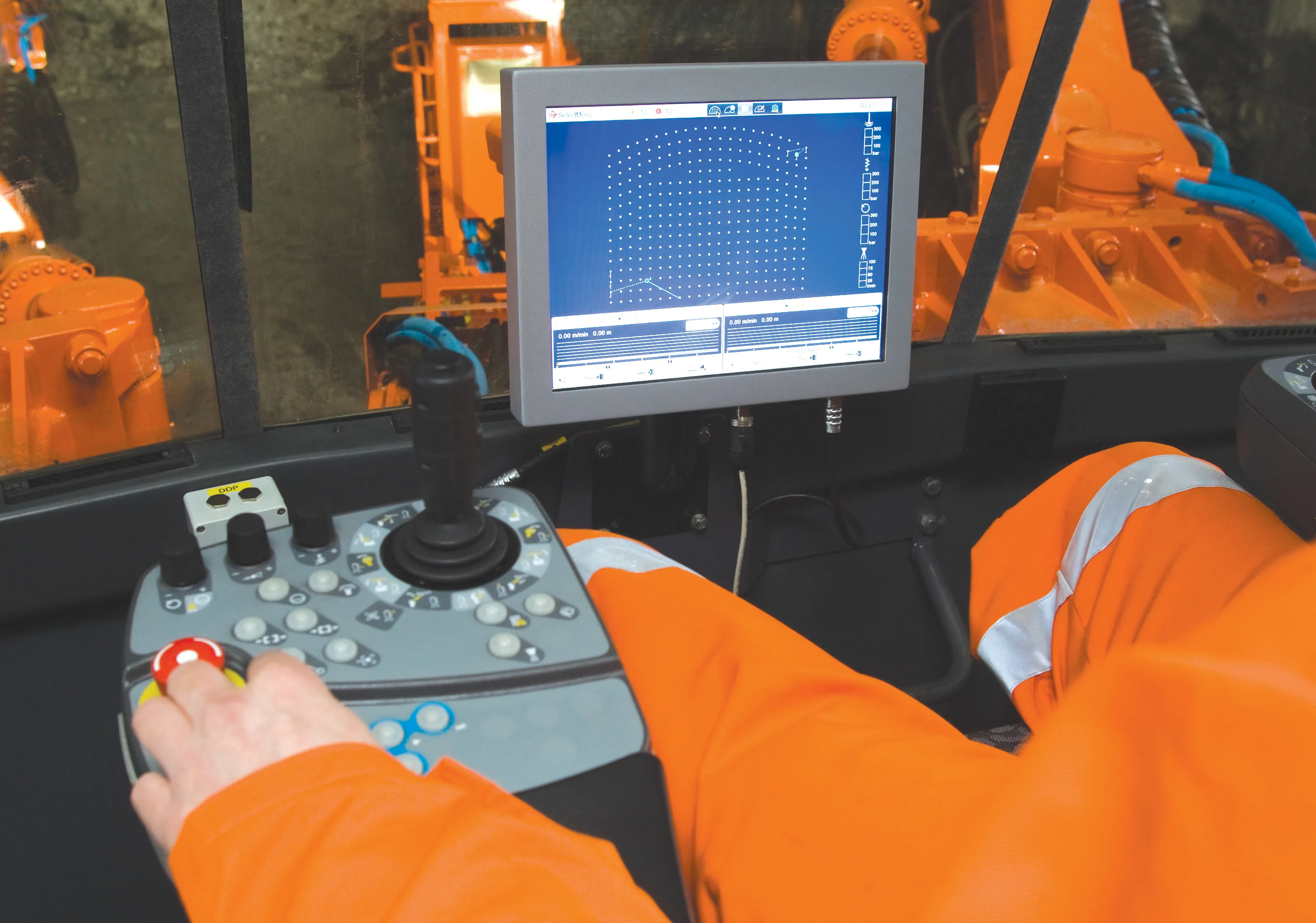For more than six months, German contractor Jens Weiss has been using Sandvik’s new surface drilling rig Ranger DX800, with noted low fuel consumption per metre drilled.
The Ranger DX800 is a hydraulic, self-propelled, self-contained, crawler-type surface drilling rig. It is equipped with Sandvik-designed safety features to bring it into line with EU standard EN 16228. Typical applications are road cutting, pipeline drilling and foundation drilling, as well as production drilling in medium-size quarries.
February 9, 2017
Read time: 4 mins

For more than six months, German contractor Jens Weiss has been using Sandvik’s new surface drilling rig Ranger DX800, with noted low fuel consumption per metre drilled.
The Ranger DX800 is a hydraulic, self-propelled, self-contained, crawler-type surface drilling rig. It is equipped with325 Sandvik-designed safety features to bring it into line with EU standard EN 16228. Typical applications are road cutting, pipeline drilling and foundation drilling, as well as production drilling in medium-size quarries.
Jens Weiss, a provider of drilling and blasting services, is located in Annaberg-Buchholz in the Erzgebirge, a mountain region in Saxony. His Ranger DX800 is the first fully radio remote controlled upgraded variant of the series in Germany, enabling it to drill, set-up and tram by remote control. Together with a DC125 and a DQ500, it is now operating throughout Erzgebirge and Thuringia and in the Czech Republic.
“About wear and oil consumption I can’t comment as yet [due to the relatively short time of ownership]. However, I was positively surprised about fuel consumption which has been excellent,” says owner Jens Weiss. The company has been using Sandvik equipment since 1992 and has been involved in construction of the Jagtbergtunnel, the fourth largest in Germany, in 2009 where 10,000 anchors were installed by Jens Weiss using three Sandvik drilling rigs
“We tend to concentrate more intensively on our region, in order to avoid high transport charges and to operate in an environmentally compatible way,” says Weiss. Therefore, it was decided to expand by investing in the new radio remote controlled Ranger DX800. “The revolving superstructure was one of the outstanding features and the decision criterion for choosing this Sandvik model,” says Weiss.
“On site, the rig has a large drilling coverage from one position, in excess of 26m², without moving the rig. Further highlights are the environmentally friendly engine technology, the low fuel consumption per drill metre, as well as the new high frequency rock drill,” Jens added. Furthermore, the Ranger DX800
Meanwhile, the company Pongratz Schotterwerk in Ensdorf-Wolfsbach in Bavaria state has been using a718 Liebherr R 980 SME crawler excavator in their 15-hectare limestone quarry since May.
The family company says development of the quarry requires a crawler excavator with high capacity. The tough geological conditions with uneven excavation beds, as well as a large area of solid rock with soil, can now be developed in the coming years using the R 980 SME.
The 100tonne Liebherr R 980 SME excavator is at the face of the quarry loading dumper trucks, and in the overburden, working in tandem with an earlier Liebherr R 954 S-HD.
Because of this, the excavators must be compatible with each other. The R 980 SME is configured with a 6m³ HD bucket to produce 400tonnes per hour. "The new excavator loads a dumper truck with 40tonnes in four cycles and a dumper truck with 50tonnes in five cycles," explains Ulrike Pongratz. "There is time, then, between the loading cycles for sorting and the drop ball operation."
Numerous protective devices on the machine, together with a product range adapted especially for operation in the quarry, played a huge role for the company to acquire another Liebherr, explains Alexander Pongratz, technical head of the family-run company.
SME stands for "Super Mass Excavation" where the crawler excavators are equipped with a reinforced undercarriage featuring suspension components from the next model up in the standard range. For the R 980 SME this is the undercarriage of the R 9100 mining excavator, he says.
Combined with a heavy counterweight, the larger enables the use of larger capacity buckets for the machine’s size. The equipment, such as stick and bucket cylinder, has larger dimensions and offers higher digging and breakout forces with the adapted kinematics.
The Ranger DX800 is a hydraulic, self-propelled, self-contained, crawler-type surface drilling rig. It is equipped with
Jens Weiss, a provider of drilling and blasting services, is located in Annaberg-Buchholz in the Erzgebirge, a mountain region in Saxony. His Ranger DX800 is the first fully radio remote controlled upgraded variant of the series in Germany, enabling it to drill, set-up and tram by remote control. Together with a DC125 and a DQ500, it is now operating throughout Erzgebirge and Thuringia and in the Czech Republic.
“About wear and oil consumption I can’t comment as yet [due to the relatively short time of ownership]. However, I was positively surprised about fuel consumption which has been excellent,” says owner Jens Weiss. The company has been using Sandvik equipment since 1992 and has been involved in construction of the Jagtbergtunnel, the fourth largest in Germany, in 2009 where 10,000 anchors were installed by Jens Weiss using three Sandvik drilling rigs
“We tend to concentrate more intensively on our region, in order to avoid high transport charges and to operate in an environmentally compatible way,” says Weiss. Therefore, it was decided to expand by investing in the new radio remote controlled Ranger DX800. “The revolving superstructure was one of the outstanding features and the decision criterion for choosing this Sandvik model,” says Weiss.
“On site, the rig has a large drilling coverage from one position, in excess of 26m², without moving the rig. Further highlights are the environmentally friendly engine technology, the low fuel consumption per drill metre, as well as the new high frequency rock drill,” Jens added. Furthermore, the Ranger DX800
Meanwhile, the company Pongratz Schotterwerk in Ensdorf-Wolfsbach in Bavaria state has been using a
The family company says development of the quarry requires a crawler excavator with high capacity. The tough geological conditions with uneven excavation beds, as well as a large area of solid rock with soil, can now be developed in the coming years using the R 980 SME.
The 100tonne Liebherr R 980 SME excavator is at the face of the quarry loading dumper trucks, and in the overburden, working in tandem with an earlier Liebherr R 954 S-HD.
Because of this, the excavators must be compatible with each other. The R 980 SME is configured with a 6m³ HD bucket to produce 400tonnes per hour. "The new excavator loads a dumper truck with 40tonnes in four cycles and a dumper truck with 50tonnes in five cycles," explains Ulrike Pongratz. "There is time, then, between the loading cycles for sorting and the drop ball operation."
Numerous protective devices on the machine, together with a product range adapted especially for operation in the quarry, played a huge role for the company to acquire another Liebherr, explains Alexander Pongratz, technical head of the family-run company.
SME stands for "Super Mass Excavation" where the crawler excavators are equipped with a reinforced undercarriage featuring suspension components from the next model up in the standard range. For the R 980 SME this is the undercarriage of the R 9100 mining excavator, he says.
Combined with a heavy counterweight, the larger enables the use of larger capacity buckets for the machine’s size. The equipment, such as stick and bucket cylinder, has larger dimensions and offers higher digging and breakout forces with the adapted kinematics.








